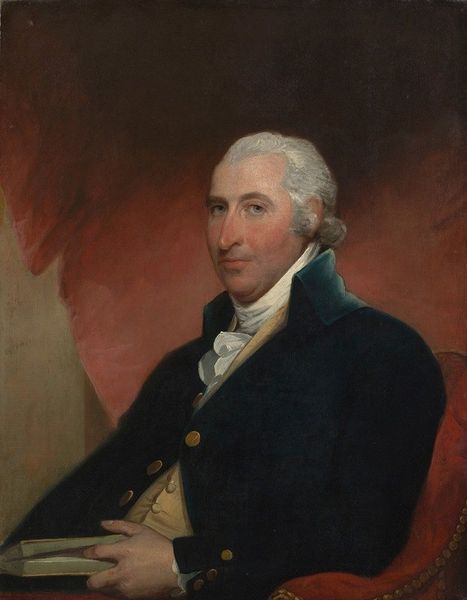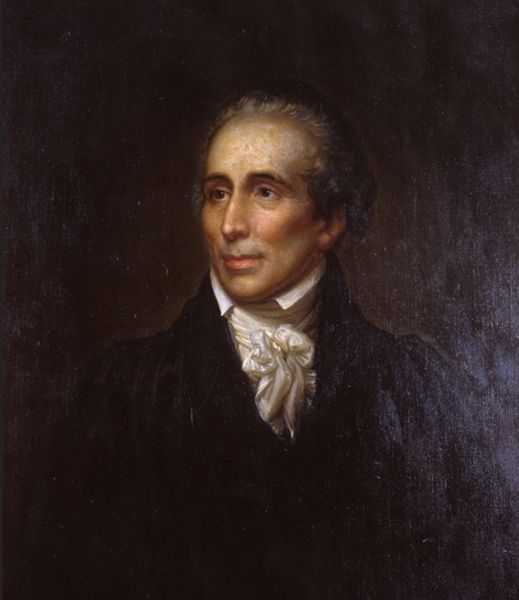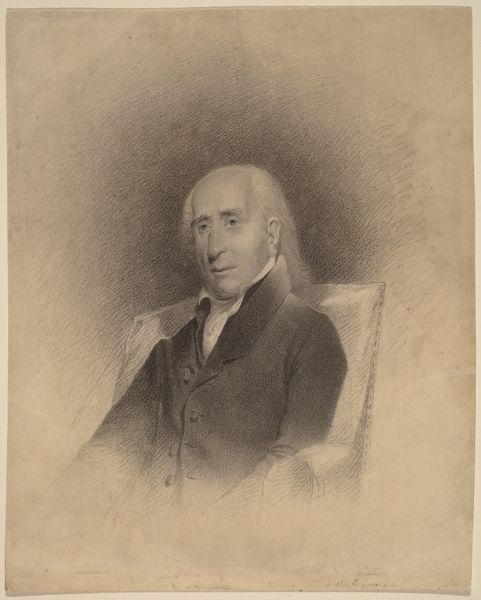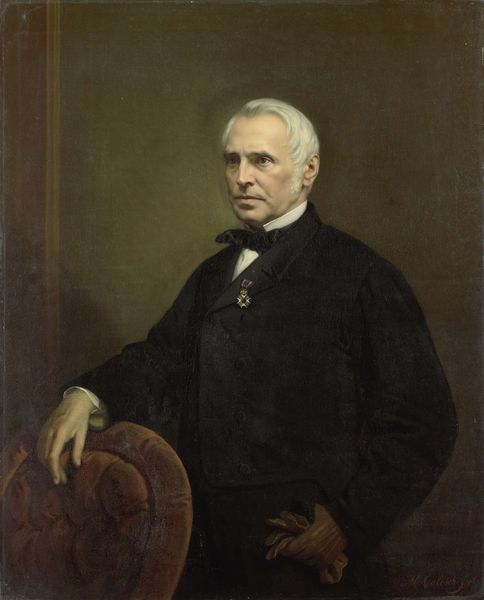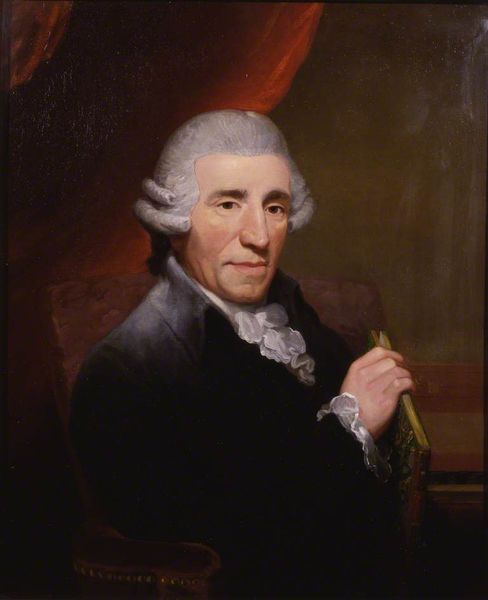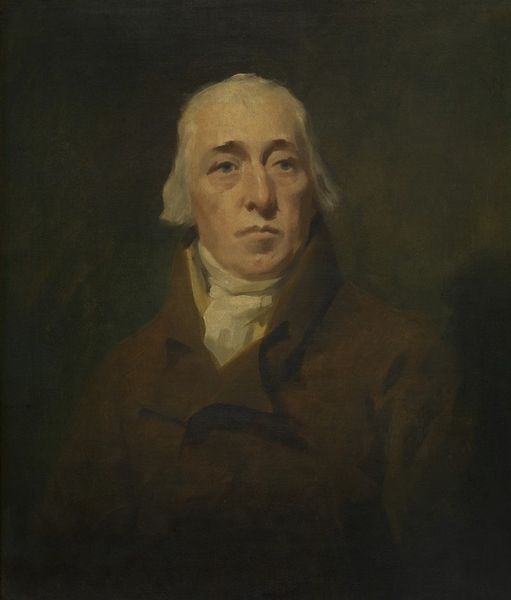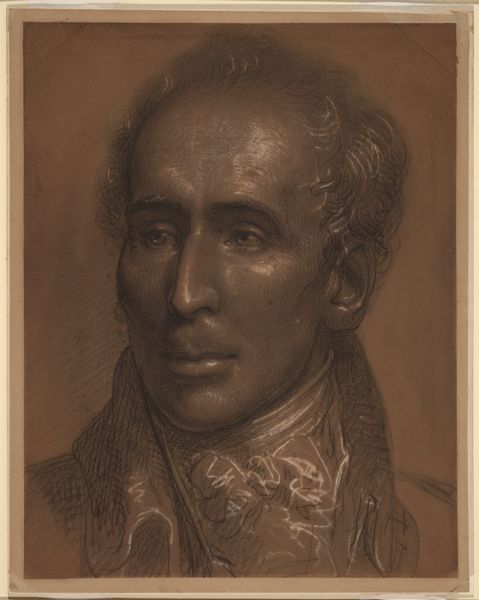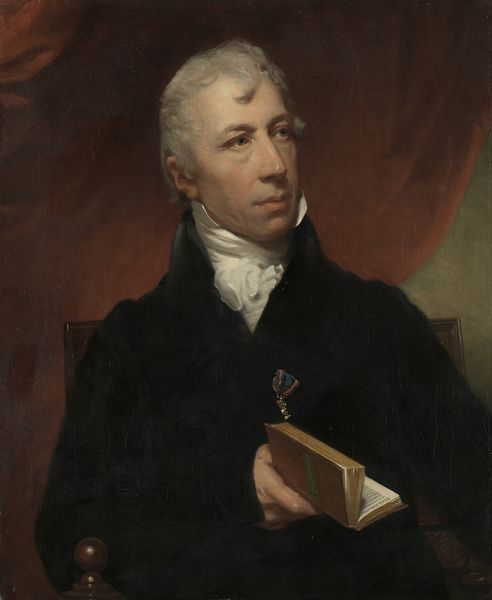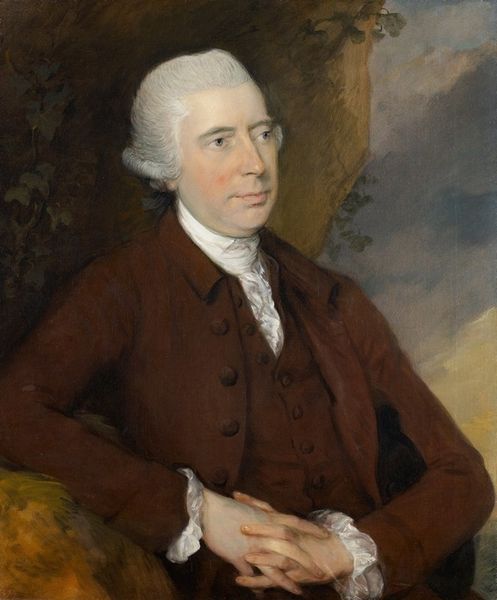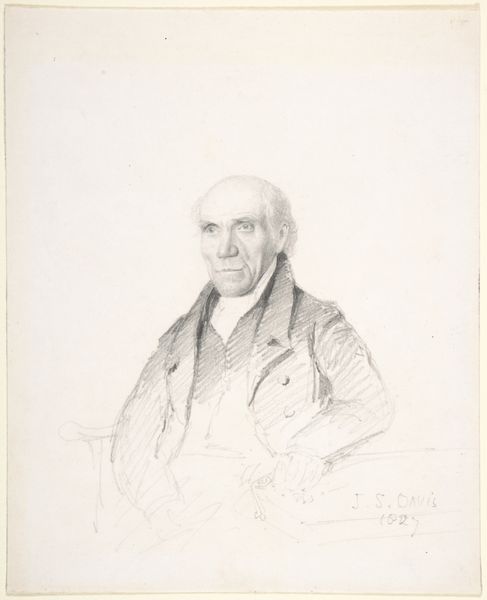
Jedidiah Morse 1822
0:00
0:00
samuelmorse
Yale University Art Gallery (Yale University), New Haven, CT, US
painting, oil-paint
#
portrait
#
neoclacissism
#
character portrait
#
painting
#
oil-paint
#
portrait reference
#
portrait head and shoulder
#
animal drawing portrait
#
portrait drawing
#
facial portrait
#
academic-art
#
portrait art
#
fine art portrait
#
celebrity portrait
#
digital portrait
Copyright: Public domain
Samuel Morse painted this portrait of his father, Jedidiah Morse, in an unknown year. The canvas is dominated by a stark contrast: a dark, almost engulfing background against which the elder Morse's face emerges with striking clarity. This division immediately draws the eye, creating a focal point that emphasizes the subject's gaze. The formal arrangement speaks to more than just visual aesthetics. The somber tones and the strategic use of light and shadow aren't merely representational. They evoke a sense of gravity, possibly reflecting the sitter's intellectual pursuits. The composition also presents a dichotomy between obscurity and enlightenment, mirroring philosophical dualisms prevalent during the period. The portrait functions semiotically; the starkness and focus on the face may act as signs pointing to the subject’s character, intellect, or social standing. The visual structure destabilizes any casual reading, urging a deeper consideration of the person beyond the surface. This interplay of light, shadow, and form invites continuous interpretation, making the artwork a site of ongoing cultural and philosophical dialogue.
Comments
No comments
Be the first to comment and join the conversation on the ultimate creative platform.
